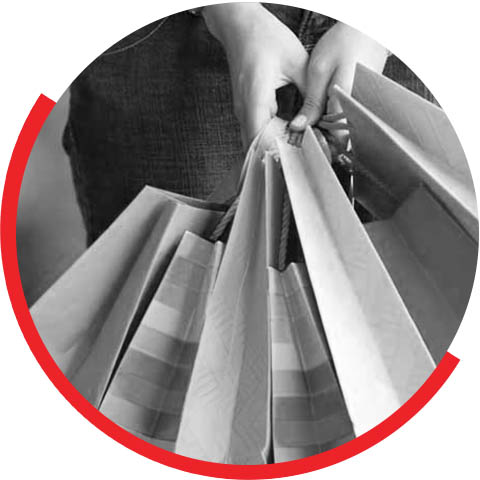The festive season is approaching and the retail sector is abuzz with possible promos to boost the impending sales spike. What is different this year is that smart retailers have already used the advances in mobile and Big Data analytics to figure out what customers are looking for, and stocked up on the same. Is your business also prepared?
As a retailer, you already know the impact that online ordering has had on store footfall. But, did you know that retailers across the globe are fighting back with the same technology? — using advances in Mobile, IoT, BigData, and Analytics, and leveraging the power of Social to figure out who their customers are; what they want; when, where and how they buy it; and stocking and selling the products accordingly. Data powered retail offerings that are pulling in customers now range from ‘will match online price’ offers to valet shopping for groceries. Increasingly, brick and mortar retailers are seeing the power that social media has, and want to leverage it to reach customers – both to increase and strengthen the customer connect and because in today’s world, everyone reaches online first – it has become the simple and go-to option, and something retailers needs to keep in mind as they plan.
Retail analytics makes this all possible. It analyzes customers’ demographics, buying patterns, responses to promotions, and loyalties to:
- Reduce inventory stock outs and pile ups:
by identifying better performing brands, products and categories and helping to manage inventory accordingly - Help in assortment optimization and product placement:
on shelves, so that the optimal mix of desirable and moving products are available - Enable targeted promotions:
whereby you’ve personalized offers to particular customers based on their buying patterns and recorded interests - Increase conversion ratios:
by offering targeted content to potential consumers - Evaluate marketing campaign effectiveness :
you tried schemes and campaigns to lure customers and retain existing ones. But have the worked? Are they working? Retail analytics will provide you the data and the answers to such questions, helping you create more effective campaigns in the future. And, if you find this representation of retail analytics capabilities to be suspiciously generalized, here are a few specifics that retail analytics delivers for your business. - A view of your entire operations:
Know how stores across the city, including in different neighborhoods, are performing. By getting data on sales, you can allocate resources so that stores lagging behind can become better performers. Compare online versus physical sales as well. Data such as this is available, but retailers often don’t know how to make sense of it – this is where an analytics solution comes in – it can translate the data into actionable insights. - Sales and Demand Forecasting:
What are the trends that are emerging across product ranges? Are they different from years past? Do they match the forecasts made? Retail analytics has forecasting techniques that factor in individual or group customer behavior, making it more accurate as a forecaster than just reliance on past performance analysis can offer. - Loyalty and Promotions:
When you create a loyalty program that is backed by data and inferences, rather than just taking a shot in the dark, you are much more likely to attract customers. Once you have your customers segmented into various buckets, you can create promos and deals just for that group. Data analytics also means you can measure the efficacy of your loyalty schemes. A retail analytics solution will offer you data on: enrollment growth rate, activity trend of loyal customers, purchase details (points earned/redeemed/expired), total purchases versus purchases by registered customers. - Store reports:
Wouldn’t it be helpful to get data on shopping trends across different customer segments like preferred day and time of purchase, category, and brand preference? Analytics also offers data on month-wise average sales by footfall/staff/store area, and a specific product affinity report by store . You would be able to stock and plan based on a particular store’s footfalls and consumer buying patterns, even send extra staff to a particular store at a given time, when data has told you there is peak traffic. - Marketing analysis:
You get Recency, Frequency, and Monetary (RFM) reports; store/product-wise analysis of effectiveness of promos, re-arrangements; marketing campaign effectiveness, and more. Overall, you will have a strong understanding of and insight into the way your various schemes and campaigns are performing. This helps with gauging efficacy of said programs, and also helps with forecasting and future planning.
The advantage of retail analytics however, goes beyond providing valuable information to improve the physical store(s). It helps retailers provide a seamless retail experience across multiple online channels by helping them understand the customers they cater to to/want to cater to. The knowledge of customer preferences, lifestyle information, and product knowledge generated by retail analytics, helps retailers effectively leverage social media as a platform to promote new products and offers.
It is time to approach all retail business issues hitherto managed only by manual tracking or intuition based decisions, with the insightful inputs of hard facts-based retail analytics. What are you waiting for? Get your enterprise analyzed and refine your retail outlet to be festival-ready.

